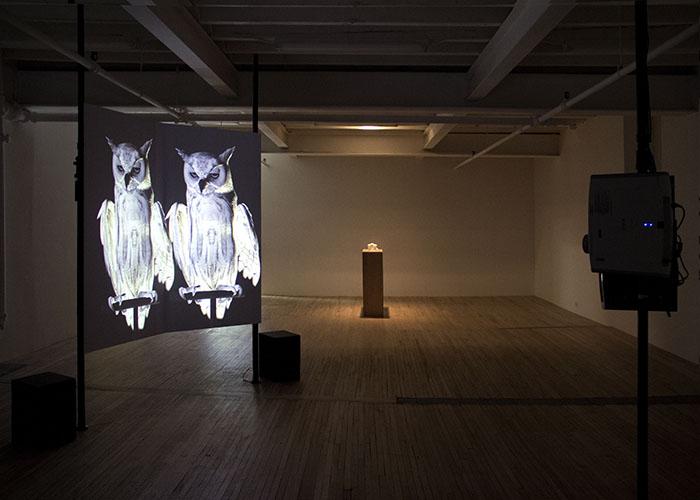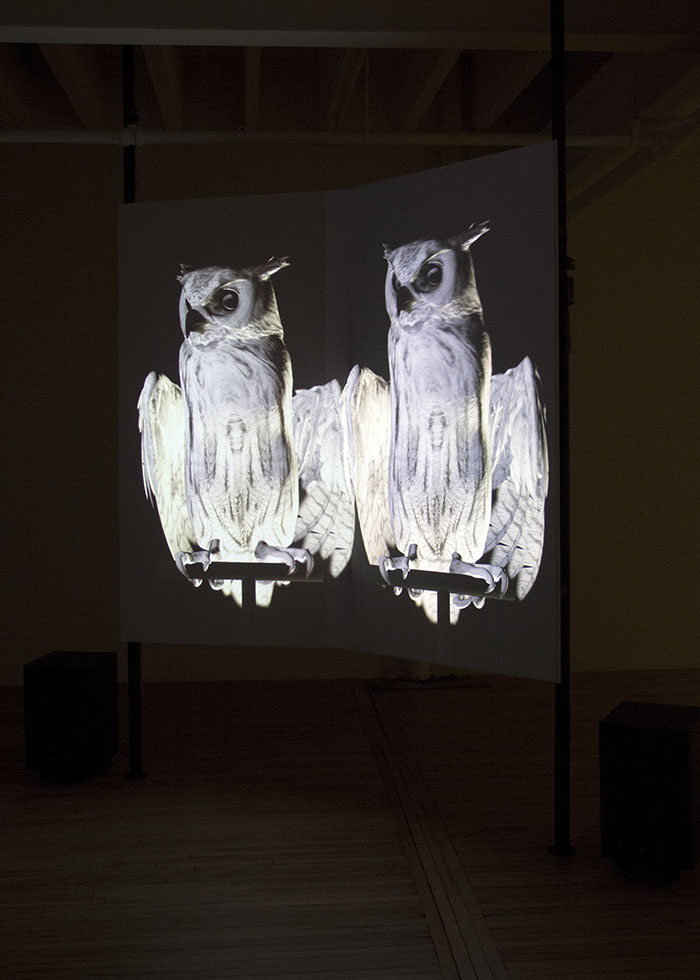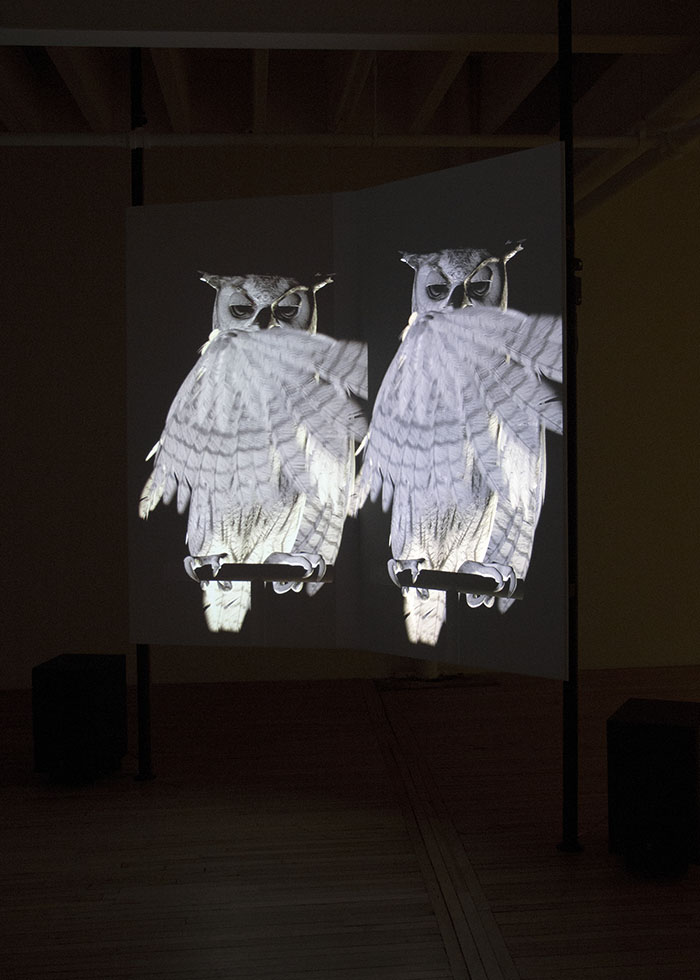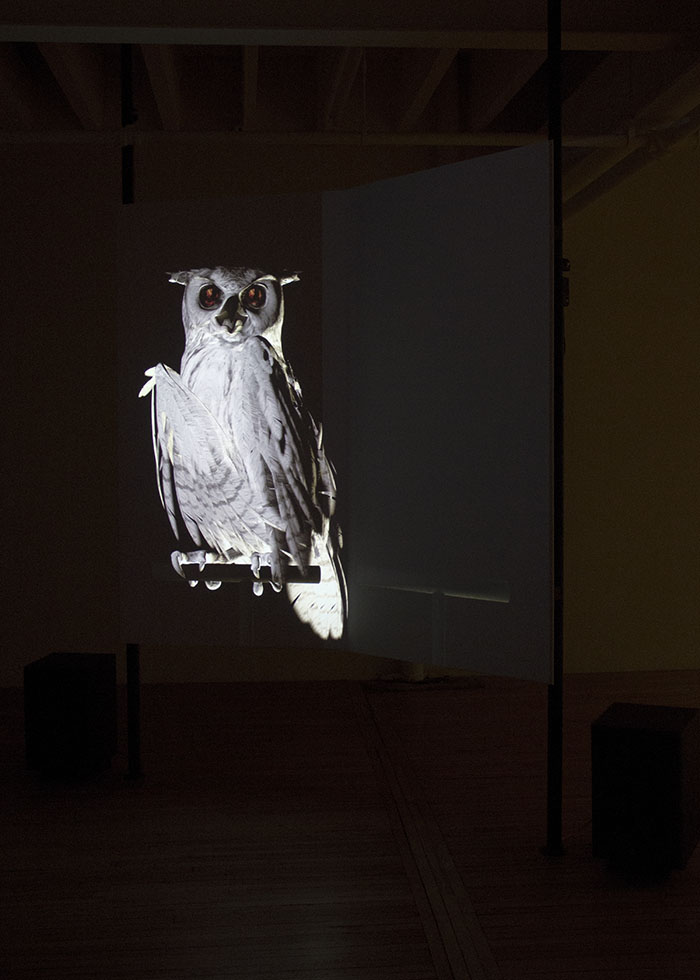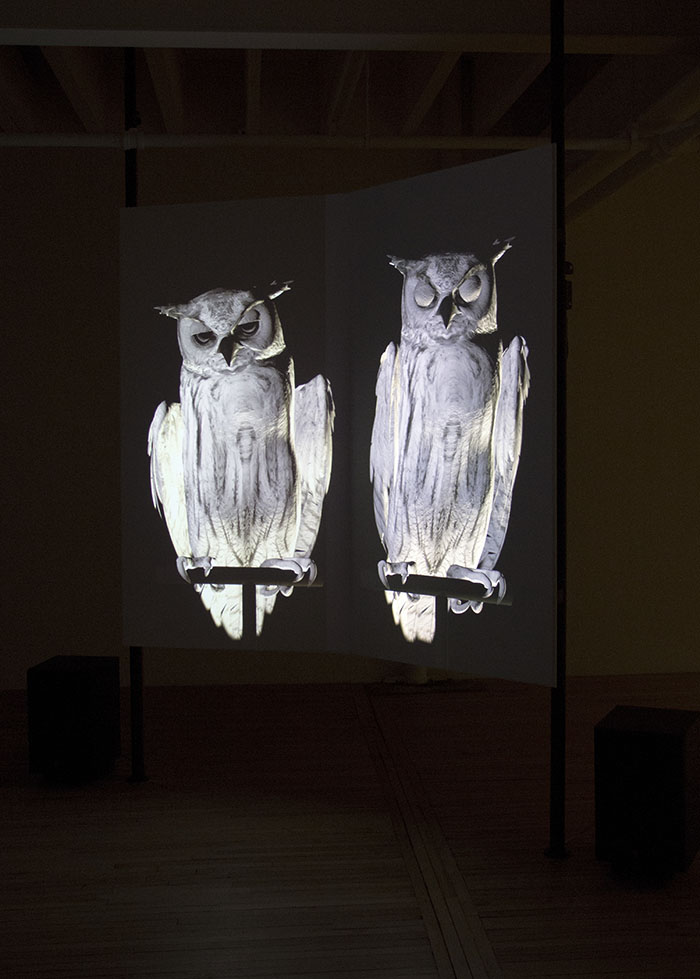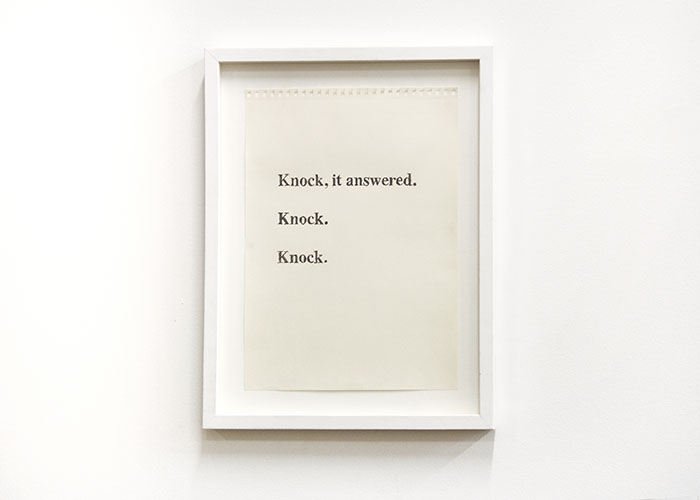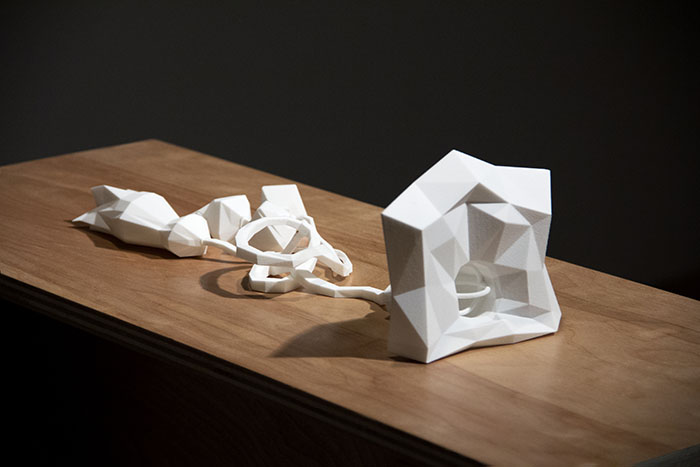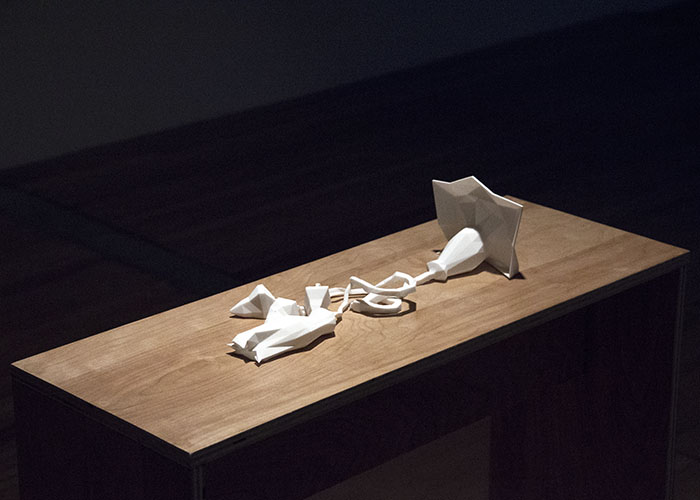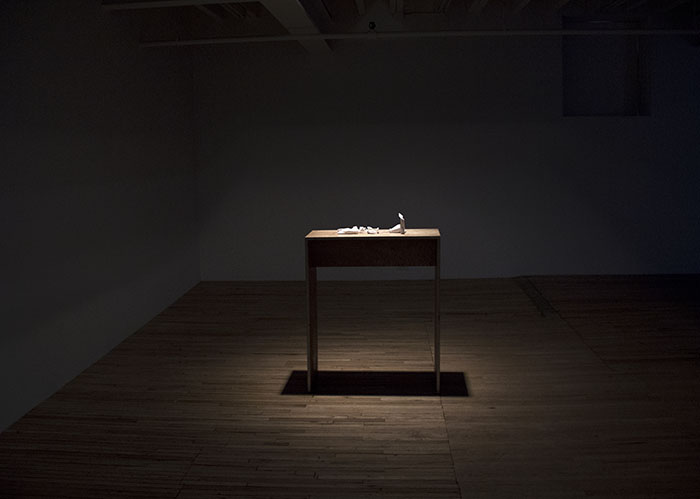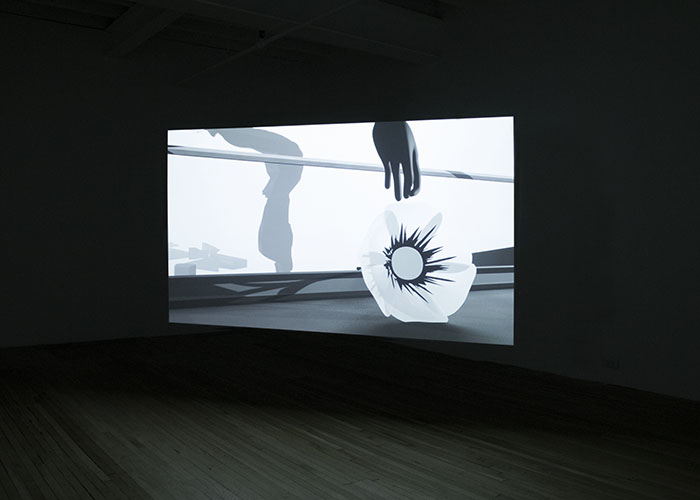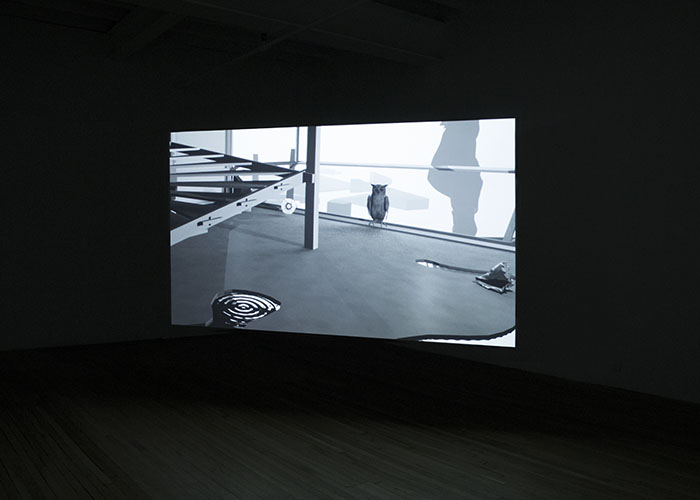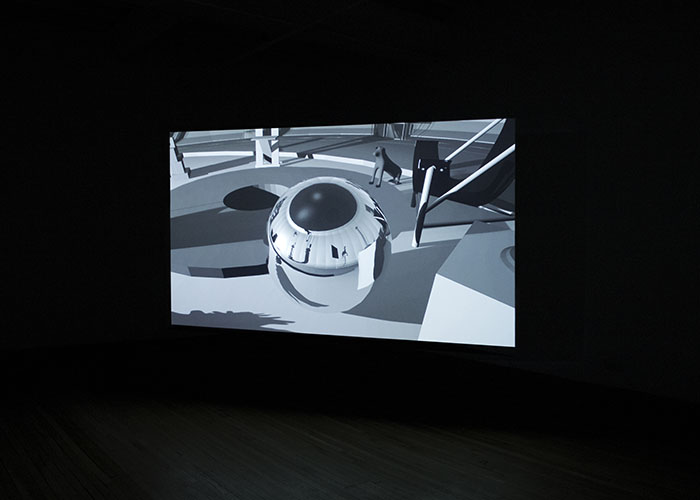ANN LISLEGAARD: Oracles, Owls… Some Animals Never Sleep
He worked feverishly, sometimes nine or ten hours at a stretch. He was beginning to feel that the novel already existed somewhere and that all he was really doing was following the directives of the oracle to bring it to light.
– Emmanuel Carrére, I Am Alive and You Are Dead: A Journey into the Mind of Philip K. Dick (2005)
Oracles are entities that serve as portals to hidden worlds, connecting to what is buried beneath the surface of things. Their messages are usually abstract or coded, which means that we have to learn how they speak. When we try to comprehend their messages and stories we are not just discovering or conversing with these non-human beings, rather we are learning their system, habitat, and language. Yet, Oracles are also tricksters who inform us about the future while breaking rules of coherence and proper conduct. It is a non-human voice that causes language, categories, and identities to shake.
Murray Guy is very pleased to present Ann Lislegaard’s fifth solo exhibition with the gallery. Inspired by distinct elements within the seminal science fiction novels Do Androids Dream of Electric Sheep? by Philip K. Dick and Death Sentences by Kawamata Chiaki, Lislegaard’s new digital animations present a fascinating perspective on the potential narratives concealed within the silence of objects.
Rachael, leaning toward Rick, said, “How would you like to own an owl?”
— “I doubt if I’ll ever own an owl.” But he knew what she meant; he understood the business the Rosen Association wanted to transact. Tension of a kind he had never felt before manifested itself inside him; it exploded, leisurely, in every part in his body. He felt the tension, the consciousness of what was happening, take over completely…”
– Philip K. Dick, Do Androids Dream of Electric Sheep? (1968)
In the dust ridden decaying city, which frames Dick’s novel, all animal life has become extinct. The protagonist Rick Deckard is characterized by a desire and longing towards owning any properly made artificial animal or even a true marvel like this life-like bird. This is probably why the owl in Ridley Scott’s film adaptation Blade Runner is invested with so much narrative gravity. Although the scene itself is short, the image of the owl in the film is haunting. Lislegaard states, “As it flies across the room or sits still, eyes gleaming with orange light, it looks like a bird full of secrets.”
Speaking in tongues,
destroying machines,
Gender on distant planets,
then good fortune
In Oracles, Owls…Some Animals Never Sleep (2014) two identical animated owls deliver a prophetic monologue of aphorisms and latent fragments from I-Ching. The monologues are interrupted by compressed noise, and dramatized and distorted samples from Blade Runner. These unruly voices are at times menacing yet they are also humorous, doubled – a multiplying self – with unsynchronized dancing and trance-like movements. The owl appears as a visually unstable oracle, breaking-down linguistic structures, and engaged in a squeaky quest to interrogate the notional coherence of self and gender.
The hallucinatory journey through the tangled visual world of Dobaded (2014) is based on Kawamata Chiaki’s novel Death Sentences in which the word appears in a surrealistic poem, found among the possessions of André Breton. In the novel, the poem acts as gateway to an alternative universe or cyberspace, implementing the surrealists’ dream of a revolutionary art anchored in the subconscious.
In Dobaded, the mobiles and machinery are inscribed with secret messages, and these codes have the potentials to open up unknown languages and situations. In this sense, the work reflects the codified structures within 3D technology and animation processes. Like trees in a forest, the line of sight is interrupted by these objects, which hang down from the ceiling or are placed on the floor. Moving through what seems to be an expanding mechanism made of spinning and folding spaces is like experiencing a surrealist text or poem. Occasionally whole rooms are disclosed, but most often the images evoke a sense of being lost in a maze of droning machines – captivated by shadow plays and the fragmented patterns of light and darkness that seem to vibrate with each anxious glance.
For more information or images, please contact the gallery at +1-212-463-7372 or info@murrayguy.com
